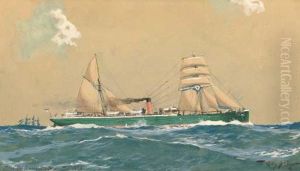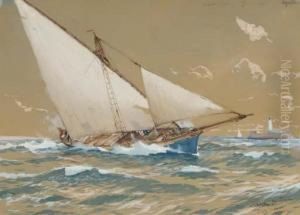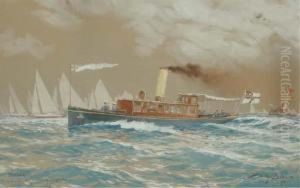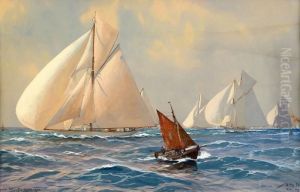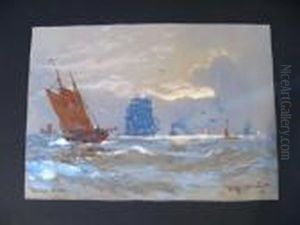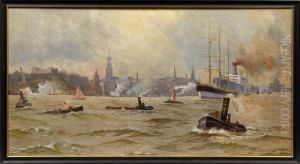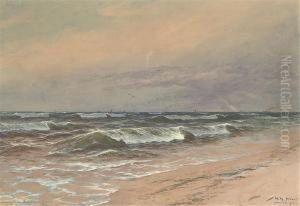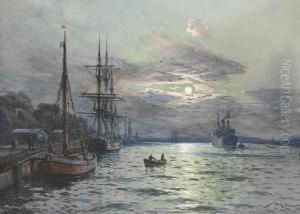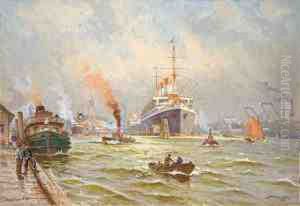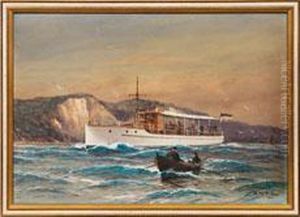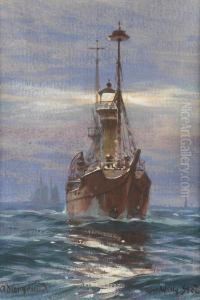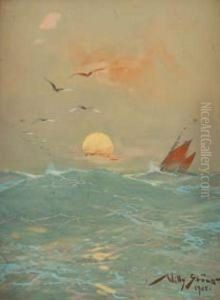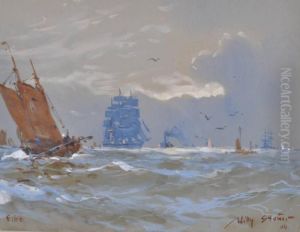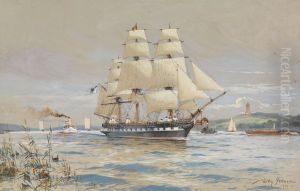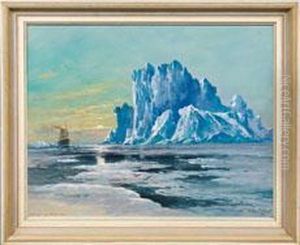Willy Stower Paintings
Willy Stöwer was a German artist known primarily for his maritime paintings, which capture the grandeur and drama of sea voyages and naval battles. Born in Wolgast, Germany, in 1864, Stöwer demonstrated an early passion for the sea and ships, themes that would dominate his artistic career. Despite not having formal training in art, his natural talent and deep understanding of maritime subjects quickly garnered attention.
Stöwer's works varied from depictions of historical naval battles to luxury liners and merchant ships of his time. His attention to detail and ability to capture the mood of the sea made his paintings highly sought after. He became particularly well-known during the Kaiserreich period in Germany, receiving patronage from Kaiser Wilhelm II, a known enthusiast of naval prowess. This connection not only elevated Stöwer's profile but also provided him with opportunities to witness naval exercises and travel on German ships, experiences that enriched his art.
Throughout his career, Willy Stöwer was involved in various aspects of the art world. He illustrated books, designed postcards, and contributed to periodicals, showcasing not just ships but also scenes of naval life and the impact of sea travel on human endeavors. Despite the specificity of his subject matter, Stöwer's work resonated with a broad audience, capturing the imagination of those fascinated by the romance and peril of the sea.
Stöwer's legacy extends beyond his paintings. He was a co-founder of the German Society of Maritime Art, an organization that sought to promote maritime art and artists. His influence was also felt in his contributions to naval and maritime memorabilia, including ship design elements and naval uniforms. Willy Stöwer died in 1931 in Pillnitz, Germany, leaving behind a rich portfolio of maritime art that continues to be celebrated for its historical significance and artistic beauty. His works remain a testament to the golden age of naval exploration and the enduring allure of the sea.
